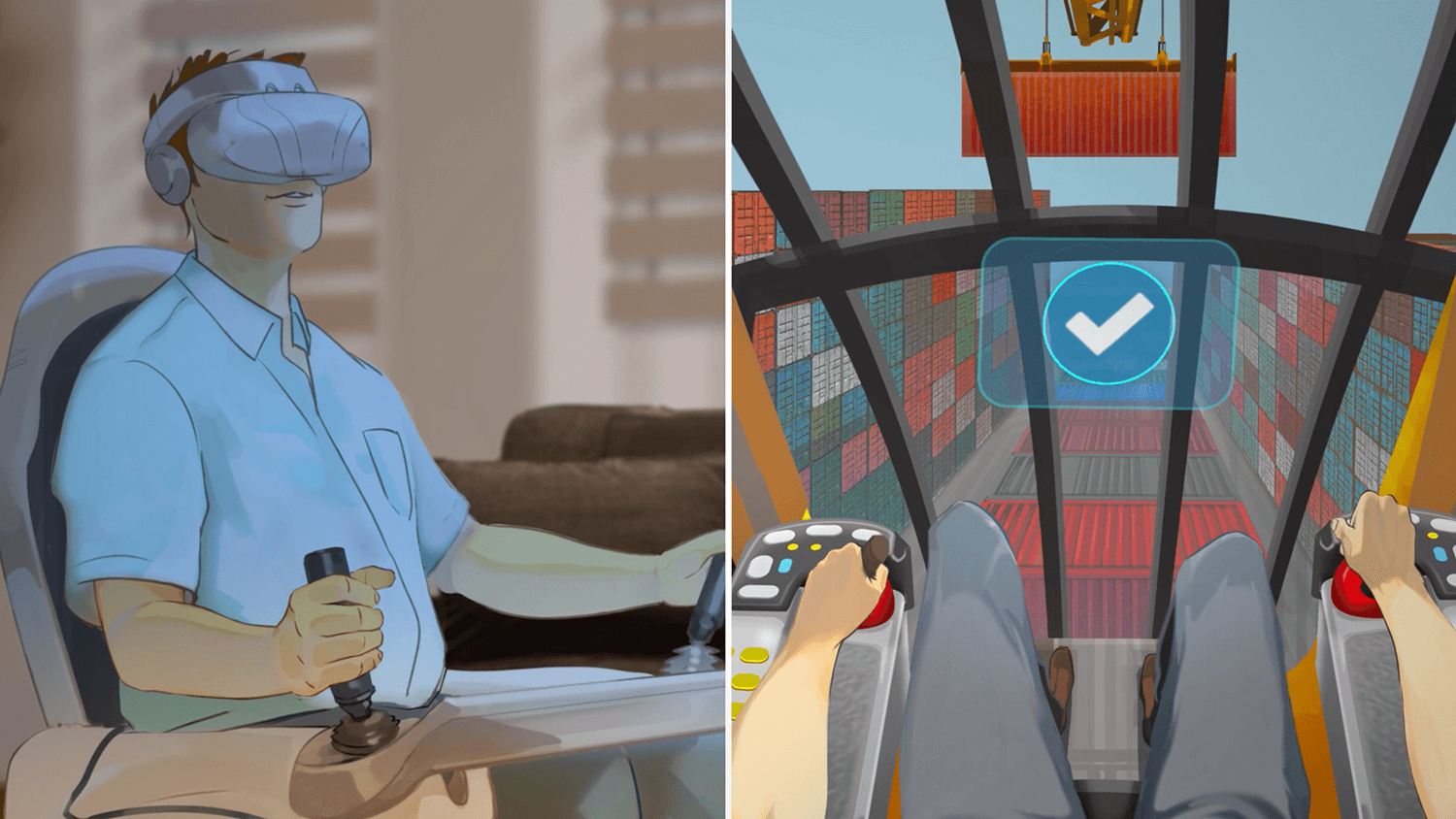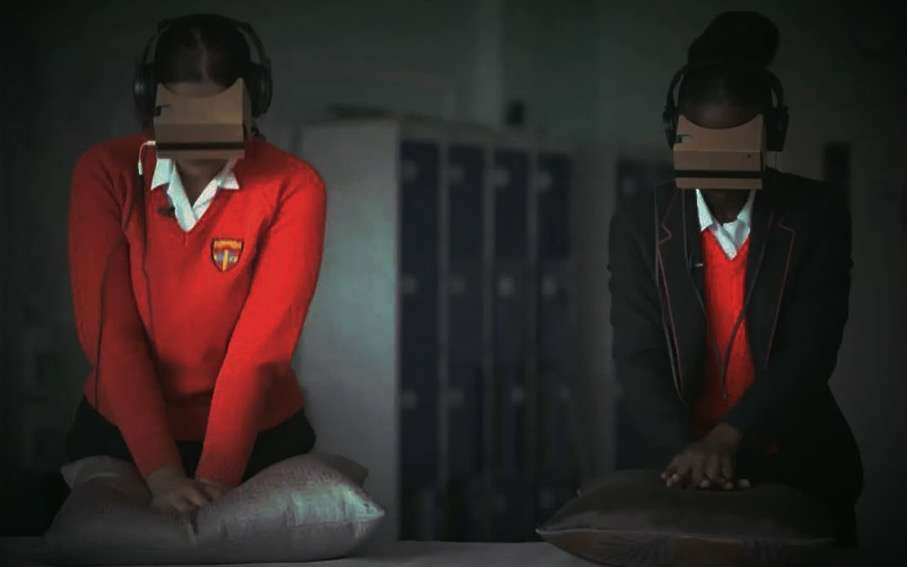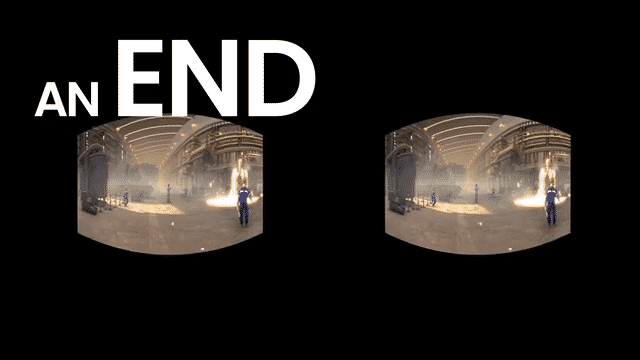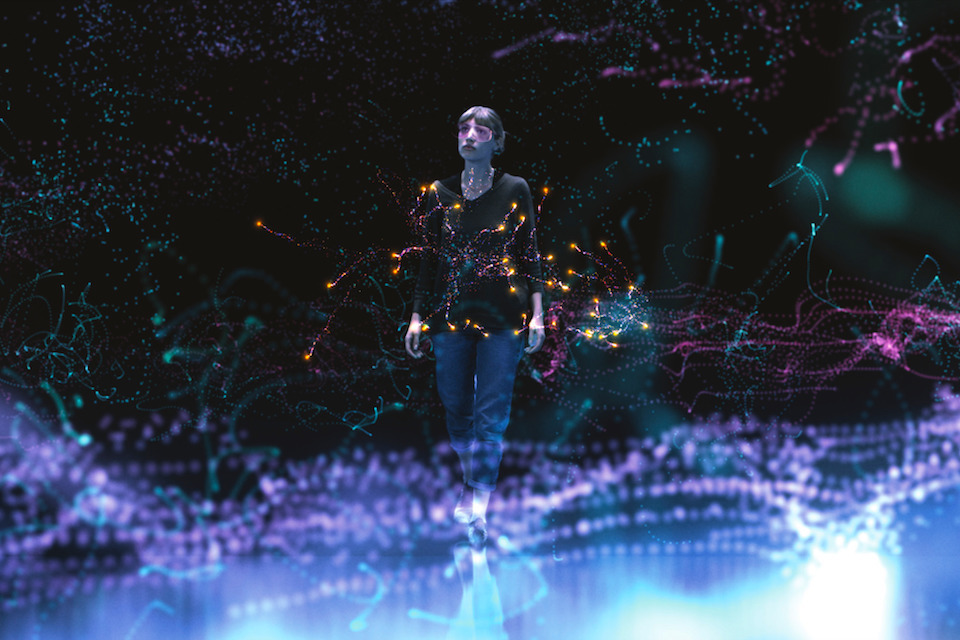USING VIRTUAL REALITY TO BOOST EMPLOYEE TRAINING

Why immersive technologies are so effective for training your teams.
More and more organisations are discovering how powerful immersive technologies like VR can be for training – and for good reason. Simply put, people remember experiences better than they remember more traditional ‘book-learning’ – in fact, a study by PwC confirmed that VR learners saw a 40% increase in confidence with their learning material compared to traditional classroom learners.
1. Explore the unsafe, safely
What makes VR such an effective training tool is the first-hand experience the user gets. The direct, active participation builds memories in a way more passive learning methods can’t compete with - and this can be particularly useful to test hazardous environments.
Although the technology has evolved, the concept is nothing new – flight simulators operate in the same way, and they’ve been used to train pilots since the 1920s. With the added realism that’s come with new tech breakthroughs, simulation continues to provide a valuable opportunity for organisations with hazardous environments. By using VR to recreate workplaces, trainees are able to acclimatise, learn and ‘fail forward’ without the risk of hurting themselves or others.
Operating in a high-hazard industry, global mining company Anglo American needed a way to safely educate their workers on the potentially dangerous situations they could face in their workplace. Having spent time on-site, we created a virtual refinery environment called “Learning From Incidents'', simulating the workplace and helping employees spot hazards and address them before becoming dangerous. Click here to read the full case study.
2. Save time and money by experiencing environments remotely
VR doesn’t just provide a safer place for users to learn – it also makes it easier to access difficult or impossible locations. Whether it’s distance, practicality or cost, there are many different reasons to substitute an on-site visit for a VR experience.
With VR headsets getting easier and easier to obtain, these experiences can be held in an office, a training facility or even a trainee’s own home. By mapping out an environment, users get a realistic sense of the space, and you don’t have to worry about the logistics of transporting trainees physically to a location.
An example of this is our work with EDF Energy. We developed a 360 video experience to help onboard their new hires. The experience took the user on an immersive journey inside a nuclear reactor to see how nuclear power is produced, giving a greater understanding of the process. It was so successful as an internal piece that they released it on YouTube – to over 13.7 million views.
3. Training in responsive environments
Until recently, VR was limited to pre-set experiences. Everything that happened in the experience needed to be preprogrammed to happen. Now, they’re becoming more flexible.
The rise of artificial intelligence means that a VR experience can take on a life of its own – allowing users to encounter something new each time. By building interaction mechanisms that work off the user’s responses, the trainee has more agency, which contributes to a deeper sense of realism.
Because VR allows users to see the world from someone else’s perspective, this kind of emotional stimulation can be a powerful teaching tool – specifically for difficult situations in leadership training.
Examples of this could include letting a difficult employee go, experiencing situations from the position of a different culture or gender, or experiencing bad leadership and what not to do. This allows trainees to get a better understanding of how they’ll be perceived in those situations in real life, leading to real behavioural change.
Lifesaver, a project we worked on with Unit9, put users in the hot seat of a ‘live’ emergency through VR. Immersed in a high-pressure environment where a life was hanging in the balance, users learned to perform CPR using Google Cardboard and a pillow. And the results were staggering – teenagers’ confidence in performing CPR jumped from 38% to 55%.

VR and your organisation
Developments in immersive technologies are progressing at an incredible rate. But it’s important not just to use technology for its own sake – it has to be rooted in your organisation’s specific needs.
Interested in finding out if VR could support your training programme? Get in touch with our experts today.




